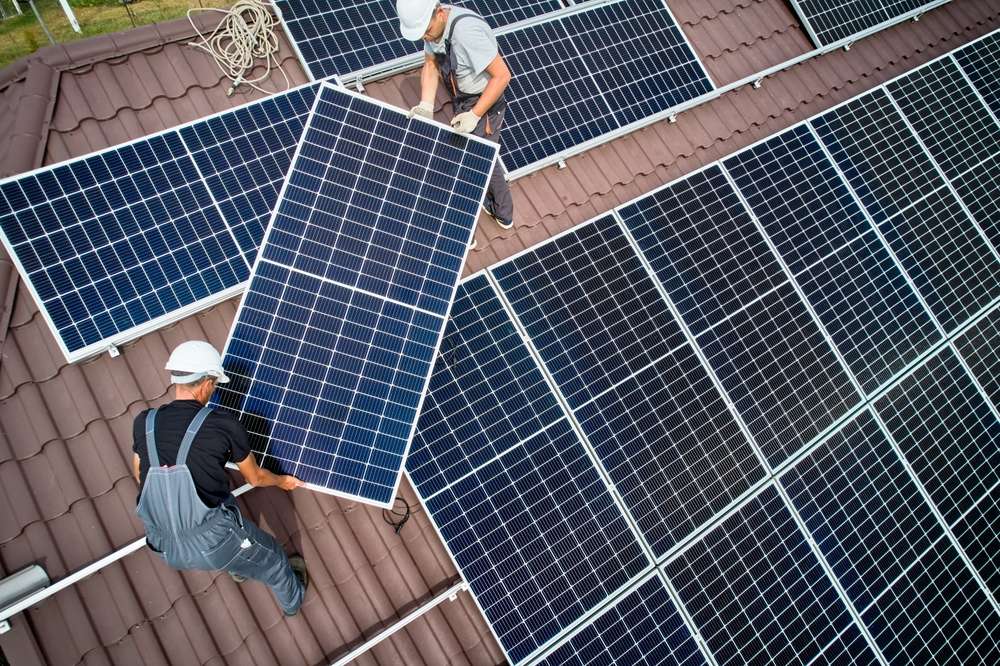How Solar Roof Tiles Are Changing Home Energy Solutions in the U.S.
Discover how solar roof tiles are transforming the way U.S. homeowners use energy. These innovative tiles combine clean power generation with modern design, offering an eco-friendly alternative to traditional roofs while enhancing the overall look of any home. Learn how they work, what to consider during installation, and the long-term benefits of integrating solar technology into your property.

What Are the Key Benefits of Solar Roof Tiles?
Solar roof tiles deliver multiple advantages that extend far beyond simple energy production. These integrated systems eliminate the visual disruption of traditional panels while providing the same renewable energy benefits. Homeowners enjoy increased property values, with studies indicating solar installations can boost home worth by 3-4% on average. The tiles also offer superior weather resistance compared to conventional roofing materials, withstanding high winds, hail, and extreme temperatures while generating electricity for decades.
The durability factor sets solar tiles apart significantly. Most manufacturers offer warranties spanning 20-25 years, with many tiles expected to function efficiently for 30 years or more. This longevity, combined with reduced maintenance requirements, makes them an attractive investment for homeowners planning long-term residence in their properties.
Understanding the Installation Process and Key Considerations
The installation process for solar roof tiles requires specialized expertise and careful planning. Professional contractors typically begin with a comprehensive roof assessment, evaluating structural integrity, sun exposure, and optimal tile placement. The process involves removing existing roofing materials, installing new decking if necessary, and methodically placing each tile while ensuring proper electrical connections.
Installation timelines vary considerably based on roof size and complexity, generally ranging from one to three weeks for average residential properties. Weather conditions, permitting requirements, and local utility interconnection procedures can extend this timeframe. Homeowners should expect temporary power disruptions during final system connections and utility meter installations.
Critical considerations include roof angle optimization, shading analysis, and local building code compliance. Properties with complex roof lines, multiple dormers, or significant shading may require custom solutions or hybrid approaches combining tiles with traditional panels in less visible areas.
Long-Term Energy Efficiency and Performance Expectations
Solar roof tiles demonstrate impressive long-term energy efficiency, typically maintaining 80-85% of their original output after 25 years of operation. Modern tiles incorporate advanced photovoltaic technology that performs well across various weather conditions, including partial shading and cloudy days. Energy production varies by geographic location, with southwestern states achieving optimal results due to abundant sunshine and favorable angles.
System monitoring capabilities allow homeowners to track real-time energy production, consumption patterns, and overall system health through smartphone applications. This transparency helps identify potential issues early and optimize energy usage habits. Many systems include battery storage integration options, enabling energy independence during outages and peak-rate periods.
Performance optimization depends on proper maintenance, including periodic cleaning and professional inspections. While tiles require minimal upkeep compared to traditional roofing materials, ensuring debris-free surfaces and functioning electrical connections maximizes energy generation throughout the system’s lifespan.
Design Options and Aesthetic Appeal Considerations
Modern solar roof tiles offer remarkable design flexibility, accommodating various architectural styles from contemporary to traditional. Leading manufacturers provide multiple color options, textures, and profiles that closely mimic conventional roofing materials including slate, clay, and asphalt shingles. This versatility ensures seamless integration with existing neighborhood aesthetics and homeowner association requirements.
Custom design solutions address unique architectural challenges, allowing partial roof coverage that maintains visual balance while maximizing energy production. Strategic tile placement can highlight architectural features rather than concealing them, creating distinctive appearances that enhance rather than compromise home design.
The aesthetic advantage becomes particularly valuable in historic districts or premium neighborhoods where visual consistency matters significantly. Solar tiles eliminate the industrial appearance of traditional panels while delivering equivalent energy benefits, satisfying both sustainability goals and design preferences.
| Product Type | Provider | Key Features | Cost Estimation |
|---|---|---|---|
| Solar Roof Tiles | Tesla | Integrated design, mobile app monitoring | $15-25 per sq ft |
| Solar Shingles | GAF Energy | Traditional shingle appearance | $12-18 per sq ft |
| Integrated Solar | CertainTeed | Multiple color options | $10-20 per sq ft |
Prices, rates, or cost estimates mentioned in this article are based on the latest available information but may change over time. Independent research is advised before making financial decisions.
Making the Investment Decision
Solar roof tiles represent a significant upfront investment that pays dividends through reduced electricity bills, increased property values, and environmental benefits. Federal tax credits currently offset 30% of installation costs, while many states offer additional incentives and rebates. Financing options include solar loans, leasing programs, and power purchase agreements that reduce initial costs.
The decision timeline involves multiple factors including current roof condition, energy usage patterns, and local utility rates. Homes requiring roof replacement within the next decade often find solar tiles particularly cost-effective, combining necessary roofing expenses with renewable energy infrastructure in a single project.
Solar roof tiles continue transforming American home energy solutions by combining practical renewable energy generation with superior aesthetic integration. As technology advances and costs decrease, these innovative systems become increasingly accessible to homeowners seeking sustainable energy solutions without compromising their home’s visual appeal or architectural integrity.




